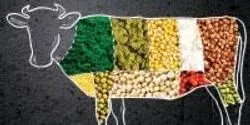Food and Beverage

Vivian Wu, a professor of microbiology and food safety in the School of Food and Agriculture at the University of Maine, was interviewed by Food Safety Magazine about her latest research on food-borne pathogens

Scientific equipment being used in the kitchen is not a new trend, but such equipment designed from the ground up for culinary use is a fairly recent development.

The Federation of Quebec Maple Syrup Producers (FPAQ) and the Fonds de recherche du Québec – Nature et technologies (FRQNT) announce the launch of the Research Partnership Program on the Food Science Behind Maple – The Physical Chemistry of Cooking with Maple. Conceived by the FPAQ, the program, with an overall budget of $1.4 million over five years, aims to promote development of knowledge on the physicochemical and sensory attributes of maple products, and to highlight the flavour chemistry of maple and how its taste harmonizes with ingredients from the world's cuisines.

Peeled tomatoes make a tasty, versatile and time-saving ingredient for hearty winter stews, homemade soups or classic casseroles. In experiments with more than 6,000 field-ripened Roma-style (sometimes called “plum”) tomatoes, U.S. Department of Agriculture (USDA) scientist Zhongli Pan and his industry and university colleagues have shown that using infrared heating to simplify removal of the tomatoes’ tight-fitting peels may offer advantages over other peeling technologies.

As part of its ongoing commitment to offering solutions for pressing food fraud issues, the Institute of Food Technologists (IFT) Global Food Traceability Center (GFTC) submitted written comments on how to most effectively implement the recommendations from the Presidential Task Force on Combatting Illegal, Unreported and Unregulated (IUU) Fishing and Seafood Fraud.













